Hip Dysplasia In Dogs
17.04.2019.
One of the worst things a dog owner can face is learning that their beloved new puppy might have hip dysplasia. A million questions run through our minds, and we try to figure out what we should do next. The natural step is to consult your vet about the next steps, and the best therapy for your puppy would be.
If you are a dog owner and you are worried about your puppy, there are some things you should know about hip dysplasia. Learn how to spot it, how it is diagnosed, how dangerous it is, and what treatment options exist. So let’s dig in
What exactly is hip dysplasia?
Hip dysplasia is an inherited condition resulting from an improperly formed hip joint. It is the hip joints’ failure to develop, and because the joint is loose, the dog's leg bone moves around too much, causing them pain.
Hip dysplasia is one of the most common skeletal diseases in dogs. It is common in many dog breeds, particularly the larger ones. However, that does not mean that smaller breeds are safe and will not be stricken with hip dysplasia. For example, Pugs and French Bulldogs are prone to this condition but are less likely to show clinical signs.
Larger dog breeds are known to suffer from this disorder and it is commonly found in poorly-bred larger dogs. Breeds that are especially prone to this health problem are:
- German Shepherds
- Saint Bernards
- Labradors
- Golden Retrievers
- Great Danes

Causes
Except for genetic factors, some environmental factors influence the development of hip dysplasia: rapid weight gain and obesity, nutritional factors, pelvic-muscle mass. Maintaining an appropriate plan of nutrition may help decrease the chances of your pet developing this disorder.
One study proved that puppies who were allowed to eat as much as they want and whose diet wasn’t regulated developed this defect in nearly 70% of cases. 30% of puppies who had regular meals that were carefully prepared and dosed developed symptoms and defects.
An unbalanced diet is not the only thing that can cause hip dysplasia; other things can cause this defect as well. Things like
- Improper exercise
- Sudden growth rate
- Obesity
Symptoms of hip dysplasia
In some mild cases, dogs suffering from hip dysplasia show no symptoms at all, but if you start noticing your dog acting strangely, these are the symptoms you should keep an eye on:
- Pain - If your dog seems sore in the hips when getting up or laying down.
- Reduced movement - If you notice your dog getting reluctant to run or jump
- Unusual walking - The deformity might cause your dog pain, so if you notice they are walking in an unusual way or even limping, it might be a symptom of hip dysplasia.
- Loss of muscle mass - The back legs might lose muscle mass because of the reduced activity.
- Narrow stance - Look at your dog’s hind limbs and see if they keep their paws close together when standing.
- Decreased motion - Dogs with hip dysplasia often have a reduced range of motion in the hip joint.
- Loose joints - Dogs’ back joints might be loose or weak if they developed this defect.
Hip dysplasia often begins while a dog is still young and physically immature. It can start developing in puppies that are five months old and worsen as they age. Sometimes, there are no signs of this problem until the dog’s later years, but in most cases, when the dog is in its middle years and is suffering from hip dysplasia, it is impossible not to notice it.

Is it possible to prevent hip dysplasia?
Because hip dysplasia is a genetic disorder, there are no medications to prevent it. These days, there are many joint supplements, surgical and other options (healthy diet, moderate daily exercise, massage, physical therapy) to help manage the condition.
There are things you could do that could help “prevent” your dog from developing this health problem, or at least keep it under check. Make sure your puppy isn’t overexercised while they are still very young. Don’t let them climb or walk too much on stairs or anywhere where their hips are under too much stress.
How is hip dysplasia diagnosed?
Many dog owners start noticing hip dysplasia symptoms long before they get the “official” diagnosis. You will most likely see some of the problems mentioned above, most likely several of them, before you visit the vet for the exam. The vet will ask you about those symptoms and will then do some of the following exams.
There are several ways to diagnose hip dysplasia, with X-rays often being the first step, but your veterinarian will probably perform a complete physical exam on your dog, including a blood chemical profile, a complete blood count, an electrolyte panel, a urinalysis, and a manual test on your dog's hips.
Treatment options
There are several surgical options, and some include a complete hip replacement, although underlying conditions might have to be sorted out before the surgery can occur. If it is a mild case of hip dysplasia, your vet might even recommend non-surgical treatment. That treatment will include:
- Weight control - The vet might suggest your dog is put on a diet, so their hips aren’t under so much pressure.
- Movement control - Another thing that should be restricted is the dog’s exercise and movement, especially on hard surfaces.
- Supplements - There are different supplements your vet might recommend to help with your dog’s bones and fluids that are participating in smooth joint movement.
- Physical therapy - Physical therapy can help your dog regain some of the movement and improve joint health.
- Medication - Some anti-inflammatory medications can help with managing the pain caused by hip dysplasia. Your dog might even have to take corticosteroids.
- Joint fluid modifiers - These are only prescribed by a vet if deemed necessary.
In severe hip dysplasia cases, surgery might be the only option. Your vet will recommend everything after their initial exams and the treatment of underlying conditions. There are different options, but the most common procedures are;
- Femoral head ostectomy (FHO) - The removal of the head and neck of the femur bone. It is commonly used when there is no other way to alleviate the pain.
- Total hip replacement (THR) - Procedure where the whole damaged hip is replaced with an artificial joint.
- Double or triple pelvic osteotomy (DPO/TPO) - These procedures involve osteotomies of the pelvis to allow for rotation of the acetabulum and improved acetabular coverage of the femoral head.
IMPORTANT! Because hip dysplasia is a hereditary disorder, dogs with hip dysplasia should not be used for breeding. Various radiographic procedures are used to diagnose and grade hip dysplasia.
World Dog Finder team

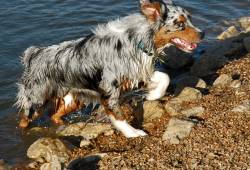
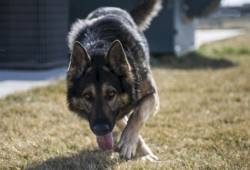

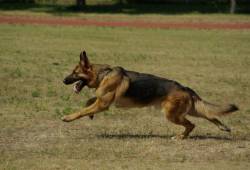





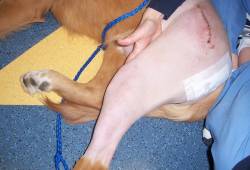
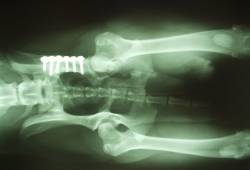

























Share